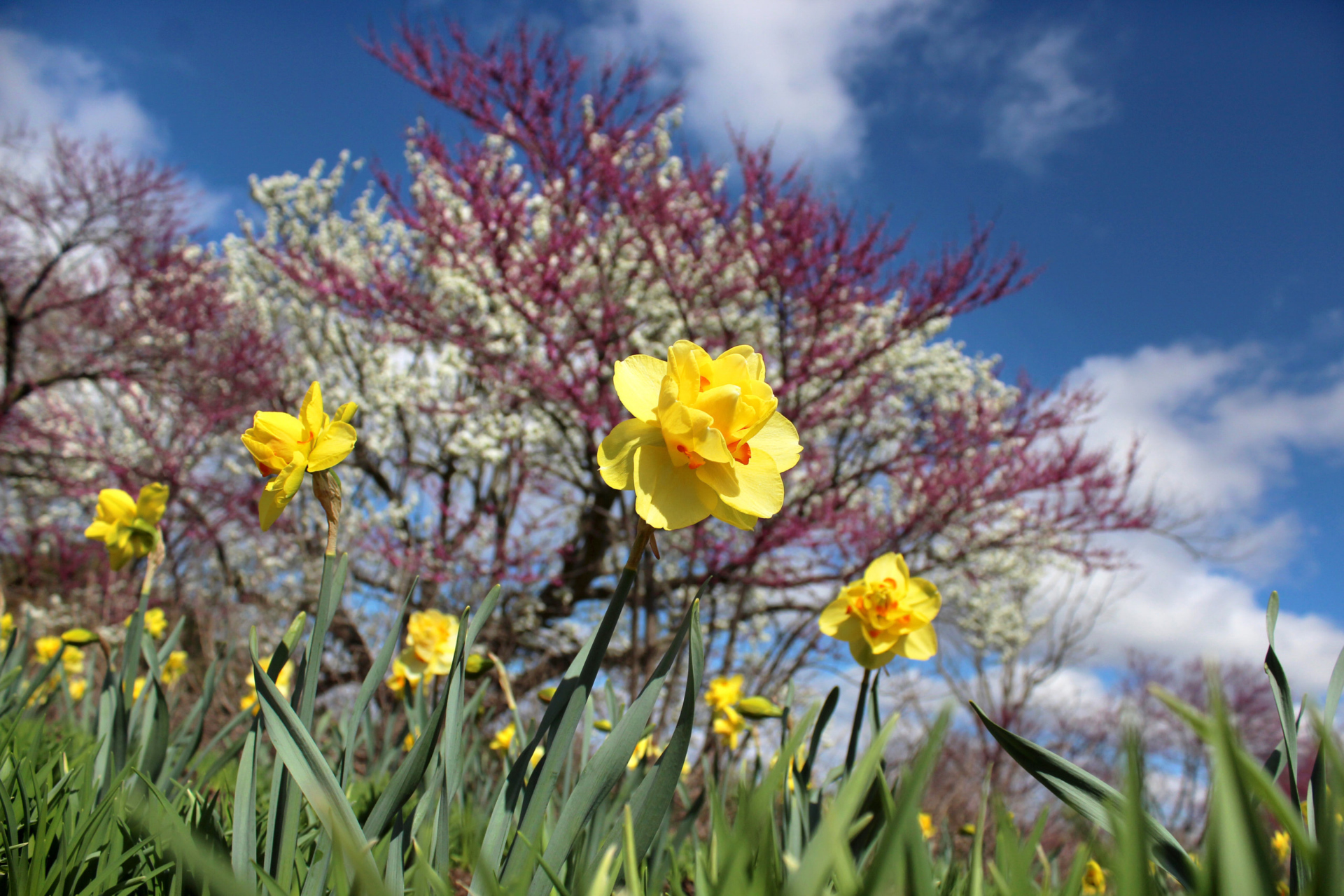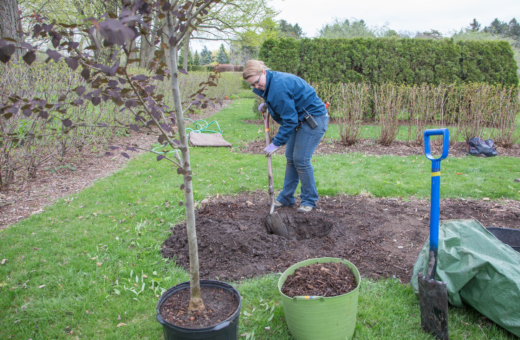March 22, 2022
One of the most common questions asked on The Morton Arboretum’s social media is, “When will the daffodils bloom?” (or the magnolias or wildflowers or redbuds). Many people want to plan a visit on exactly the right day.
The problem is, plants don’t let us in on their plans. And their plans change all the time, mainly depending on the weather—which, as anyone from the Chicago area knows, varies greatly from day to day and from year to year.
Trees and other plants know spring has arrived through a combination of signals: how long the soil has been cold and the increase in day length, warm temperatures, sunlight, and moisture. Those signals trigger hormones in the plants that cause many changes. Water rises from the roots, green sprouts poke up from seeds, buds swell, and eventually flowers open.
“All of the triggering factors change every year and every day in the year,” said Julie Janoski, manager of the Arboretum’s Plant Clinic. “That means every spring is a different experience for plants.”
That experience can turn on a dime. This year, for example, it was 68 degrees at the Arboretum on March 5, encouraging many plants to send up green shoots. A week later, on March 12, the daytime high was 23 degrees and the nighttime low was 11 degrees. Two weeks of cold, rain, and even snow followed. “Cold weather tends to slow down spring bloom and warm weather tends to accelerate it,” Janoski said. “But in Chicago, we swing between the extremes, which scrambles the signals plants get.”
As an added complication, each species responds in its own way, giving a different weight to the various signals, such as day length or air temperature. That’s because the Arboretum’s many species of plants evolved in places around the world that have a wide range of conditions in springtime.
Even plants of the same species may not bloom at the same time in different locations. For example, plants in full sun tend to bloom sooner than the same kind of plant growing in more shade.
For decades, Ed Hedborn, manager of plant records, has tallied the bloom time of many kinds of plants in the Arboretum’s gardens and collections. As a result, he has a pretty good sense of the sequence in which we can expect plants to bloom—but he can never promise exactly when it will play out. “A plant’s bloom is controlled by its genes, which are affected by the weather,” he said.
The timing of a particular plant’s blooms can vary by weeks. For example, Hedborn’s records show that in 2012—with an extremely warm and early spring—daffodils, magnolias, wildflowers, and redbuds were all in bloom by March 22. In 2017, daffodils were just getting started on April 13, while early magnolias and wildflowers were in full bloom. Redbuds didn’t begin flowering until April 27 that year. In 2019, redbuds began blooming in May.
The earliest bloom is not necessarily the best bloom: Warm weather quickly dries out flowers and ends the show. In that warm spring of 2012, for example, there were hardly any blooms left by mid-April. Early flowers are also vulnerable to sudden April frosts that leave petals shriveled and brown. “Bloom tends to last longer when the weather is cool, but not too cold,” Hedborn said.
Each week in spring, he surveys the Arboretum and presents his observations in the Bloom Report. He reports what he sees blooming, but he doesn’t make predictions or promises. “The plants will respond to the weather, not to me,” he says.
What should guests do? Visit whenever you can, and drink in the full experience of changing springtime. “Every week, as I tour the collections, I see new things,” Hedborn said. “It’s always different, and it’s always beautiful.”



